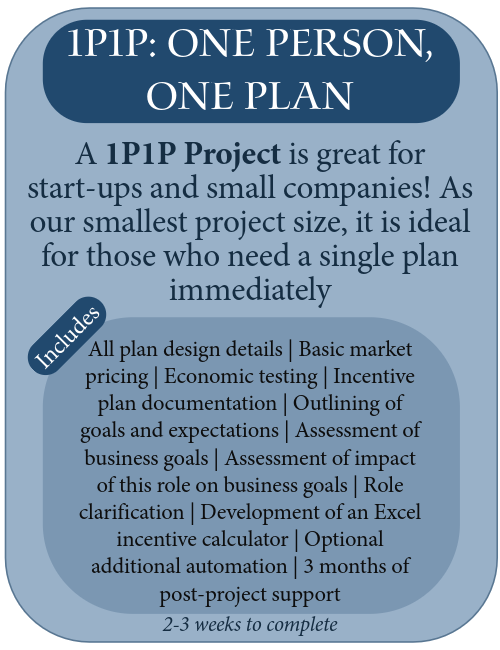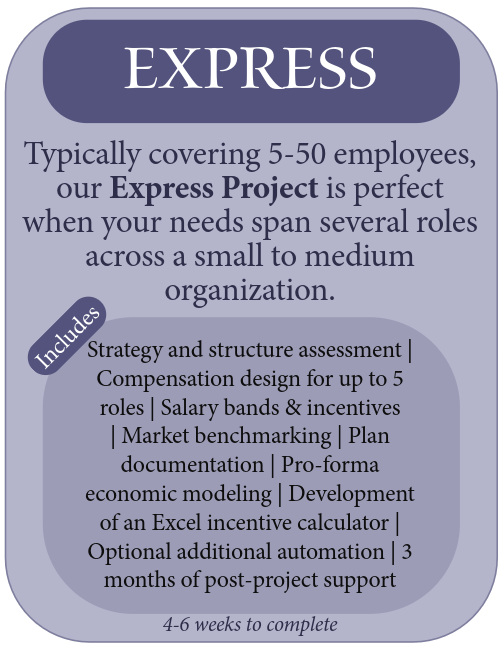Experts in Compensation Plan Design
We are committed to providing the best compensation design services, custom and industry surveys, and implementation support to companies who want to strategically align compensation with organizational goals.

Experts in Compensation Plan Design
We are committed to providing the best compensation design services, custom and industry surveys, and implementation support to companies who want to strategically align compensation with organizational goals.


In the world of broad-based compensation (as opposed to Sales or Executive Compensation), plan developers help companies create internally equitable and externally competitive compensation structures for their employee population.
Prosperio has worked with several trucking organizations to develop a streamlined method for analyzing jobs and setting up grades and salary structures for those jobs.
Outside of trucking companies, however, we would recommend that you reach out to Madell Consulting (http://madellconsulting.com/) as Moira and her team are much more experienced with job leveling and salary structures in a variety of industries.
Sales reps present a unique challenge for HR professionals trying to "slot them into" an existing structure because they often have very small salaries. For this reason, sales jobs are usually managed under a different structure entirely. This enables HR to account for using target total cash vs. salary as the job value determinant.
Whatever your industry, Prosperio can help you figure out the best approach to slotting sales jobs into an already defined job structure.
Many organizations use annual bonus plans to provide additional pay, usually phrased as a percentage of base salary. These plans are usually quite structured, but organizations sometimes need help taking a decentralized historical approach and applying more focus to it, to ensure role consistency and sensible budget management throughout the organization.


